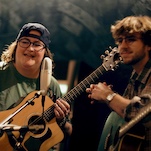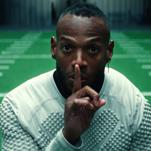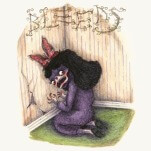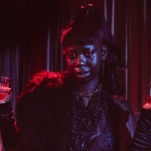Still Corners: City Lights and Seaside Nights

Still Corners’ Greg Hughes is trying very hard to think of a specific filmmaker he likes. It’s Peter Weir, a name that he’ll shout out moments later, along with praise for the director’s dense catalog of films—many, which Hughes says matches the tone of his band’s music. But at the moment…he’s stumped.
“We have memory!” he insists. “But I think we’re being ruined by the internet. You don’t have to remember anything anymore.”
“I think I know one telephone number,” consoles bandmate Tessa Murray, agreeing with his assessment with a laugh. “Mine!”
The internet may be responsible for drip-feeding us knowledge via clicks instead of dredged up memories, but neither member of the band can deny the power it has had on their career. After two albums with Sub Pop, the duo opted to forgo the traditional distribution deal and release album number three, Dead Blue, on their own label. Thanks to digital marketplaces, that no longer seems like such a pie-in-the-sky proposition.
They also left London, where they’ve lived for over a decade, in favor of Deal, a tiny town, located the next county over in Kent. Both say that the bucolic atmosphere, where there was little do but haunt the local pub and go for walks, helped them focus completely on the job at hand, writing and recording for the better part of a year.
“It was this seaside town,” says Hughes, setting the scene. “It was really cool place. There was not much going on. It was very beautiful we were right on the sea. We had this amazing house right on the beach. That may have been why it took so long.”
He pauses to laugh. Since recording, he and Murray have relocated to Austin, Texas, so it’s clear the multi-instrumentalist is enjoying this opportunity to reminisce.
-

-

-

-

-

-

-

-

-

-

-

-

-

-

-

-

-

-

-

-

-

-

-

-

-

-

-

-

-

-

-

-

-

-

-

-

-

-

-

-








































